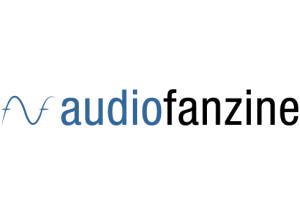January 17, 2015 editorial: comments
- 2 replies
- 2 participants
- 1,961 views
- 2 followers
Mike Levine
MIDI’s Remarkable Run
The latest installment of our Sound Synthesis, Sound Design and Audio Processing story talks about the birth of MIDI in 1983, and mentions how remarkable it is that MIDI has survived for 32 years while technology has changed so much around it. Of course, MIDI has been refined over the years (in fact, a new "MIDI HD" protocol, which will work on top of the original MIDI spec is being considered by the MIDI Manufacturers Association), but the basic architecture is still there, all these years later. Reading that spurred me to look back at what else was going on in music technology and computing the year MIDI was born, and what I discovered made me even more impressed that MIDI is still alive and kicking.
In the computing world of 1983, Apple released the Lisa, which was a predecessor to the Mac (the Mac launched in 1984), and the first personal computer to feature a mouse-driven graphical user interface (GUI). The Lisa had 1 MB of RAM. To compare, a typical Mac today has between 4 and 16 GB of RAM. The Lisa had a clock speed of 5 MHz. Again, for comparison sake, the new Mac Pro computers run at 3.5 GHz, which is roughly 700 times faster than the Lisa, and that’s without even taking into account the significant performance improvements from today's multicore processing technology.
Back in ’83, IBM, developers of the original PC, announced the 4.77 MHz PCjr, the company’s first computer designed for the home market (the original IBM PC was released in 1981). The PCjr came in two models, one with 64 KB of RAM (yes, kilobytes) and the other with 128 KB. Here’s a little perspective: I have Pro Tools open on my Mac Pro as I write this, and that application alone uses up 1.28 GB of the 16 GB of RAM I have installed. If I’m doing my math right, that means that Pro Tools requires 10,000 times as much RAM as was in the entire 128 KB PCjr., and 20,000 times as much as was in the lesser model.
In the music technology world of 1983, tape was still the only game in town for audio recording, and home recording musicians only had a limited range of affordable multitrack options. Three of them came from Tascam. Two were reel-to-reel recorders: the 1/4” 4-track Tascam 34, the 1/2” 8-track Tascam 38, both of which came out that year. Less expensive was the Tascam 144 a 4-track cassette multitrack that was released in 1979, and which was the first so-called “Portastudio.” Imagine squeezing 4 tracks of audio onto the 1/8” width of a cassette tape. Not exactly high fidelity, but it was considered very cool at the time.
Instrument wise, there were lots of great-sounding analog synths out back then, from companies like Moog, Roland, Oberheim and Yamaha. The first MIDI-equipped synth was the Sequential Circuits Prophet 600, followed soon after by the Roland's JP6. Both were released just weeks prior to MIDI’s official launch at the 1983 NAMM show. Another instrument that debuted in 1983 was the Yamaha DX7, a digital synth that used FM synthesis and quickly became ultra popular. The DX7’s glassy Fender Rhodes style piano sound would soon become heavily overused in pop music.
When you think about where technology was then, compared to where it is now, and then realize that MIDI is still relevant, it’s pretty astounding, don’t you think?
And speaking of the NAMM show, it starts on Thursday, and while certainly I don’t expect anything as groundbreaking as MIDI to be introduced — although that would be really cool — there will be numerous products introduced, and the Audiofanzine MIDI team will be there to cover it. Our NAMM portal already has a list of new products that have been pre-announced for the show, and once the festivities get underway, we’ll be uploading videos that we shoot of the new stuff, and uploading them to the portal for your viewing pleasure. So bookmark that link and check back regularly. In next week’s newsletter, I’ll give you an update from the first two days of the show.
Have a great week.
Mike Levine
U.S. Editor, Audiofanzine
bluzgtr
The most interesting thing at NAMM this year might not be a product. On Thursday, January 22, at 7 PM at the Anaheim Plaza Hotel will be the Howard Roberts Celebrity Guitar Summit, as well as the release of the CD and documentary about "the most listened to guitar player in the world."
The website for the documentary is:
Www.HowardRobertsproject.com
If you're not familiar with Howard, there's a lot more information here:
http://utstat.utoronto.ca/mikevans/hroberts.html
I hope the Audiofanzine team will be able to attend. I think they'll find it interesting.
Larry Bellinger
Bluzgtr
Mike Levine
- < Thread list
- Rules

